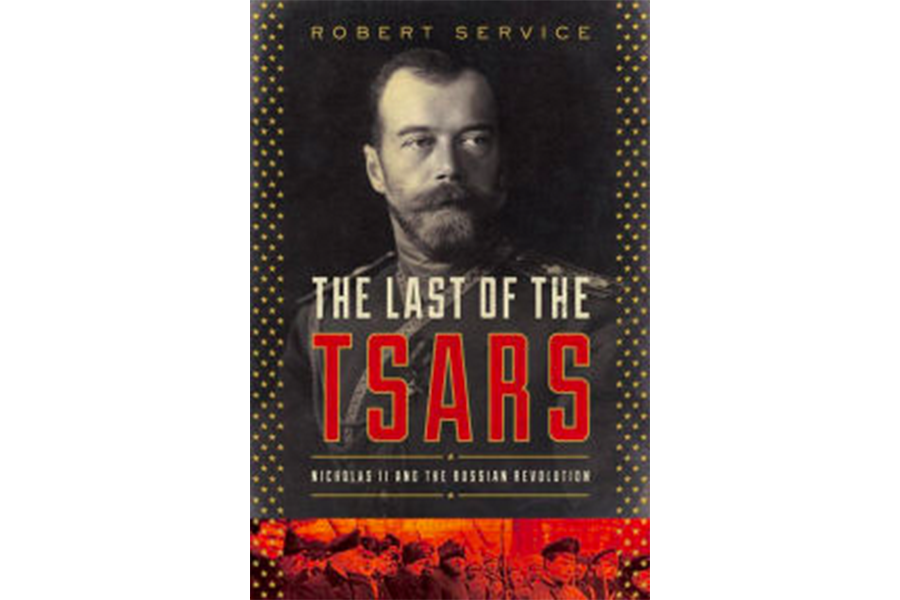'The Last of the Tsars' is authoritative, definitive, and tells a compelling story
Loading...
The overthrow of the Russian Tsar Nicholas II in February 1917 was one of the seminal events in the 20th century. The Tsar abdicated during what became known as the February Revolution and was replaced by a Provisional Government led by Alexander Kerensky. Just six months later – thanks to plenty of help from the Germans – the new government collapsed and Kerensky gave way to Vladimir Lenin and the Bolsheviks. And, when Lenin took power, the fate of the Tsar remained an unanswered question.
The distinguished Oxford historian Robert Service examines this important historical moment in The Last of the Tsars: Nicholas II and the Russian Revolution. This meticulously researched book is not, as the title implies, a biography of Nicholas but rather a detailed, thoughtful look at the time between the Tsar’s abdication and his murder 16 months later. A more accurate title would be “The End of the Last Tsar.” No matter. Service’s books are authoritative, definitive, and tell a compelling story, and this is no exception.
Nicholas II became Tsar in 1894. He was dignified, reserved, and had a regal bearing. But he had too much confidence in his own judgment and was stubborn and unwilling to compromise. His wife, the German-born Alexandra, had been brought up in England at the court of her grandmother, Queen Victoria. She was ignorant, imperious, and opinionated. Given the rapid changes in Russia that the Tsar faced, this was, Service says, “a toxic situation long before the outbreak of the Great War.”
Popular discontent had grown throughout the Tsar’s reign and increased sharply under the privations imposed by the war. In early 1917, demonstrations against the regime broke out in St Petersburg and quickly escalated. Within 10 days, the Tsar had abdicated and the 300-year rule of the Romanov dynasty came to a sudden and ignominious end.
The Provisional Government initially allowed the Tsar and his family to remain in comfortable circumstances under house arrest in the Alexander Palace at Tsarskoe Selo just outside of St. Petersburg. The problem was that the Petrograd Soviet, the body that represented St Petersburg’s soldiers and workers, had a voice in the Provisional Government and wanted to take a harsh line with the Tsar and his family. Eventually, Kerensky decided to relocate the Romanovs to Tobolsk, a “small, quiet and remote” town in West Siberia where they would spend the next six months. But the political situation in Russia continued to deteriorate and in late October, the Provisional Government collapsed and the Bolsheviks took power.
This was bad news for the Tsar because the Bolsheviks had no sympathy at all for the former ruler or his family. Initially, the Bolsheviks planned to bring Nicholas to Moscow for a public trial. However, until Lenin agreed to the Treaty of Brest-Litovsk that took Russia out of the war, this was deemed impossible. So the Romanovs (now referred to in coded Bolshevik messages as “the baggage”) were moved to Ekaterinburg, a small town in the Urals where they could be watched more closely. And, for the first time, their physical safety was in doubt.
Nicholas was remarkably stoic about his imprisonment and conducted himself with great dignity. Indeed, he seems to have developed new hobbies – like reading and gardening – to occupy his days. But there is little evidence that he spent any time at all reflecting on the ignominious end of his reign. Absolute power rarely encourages reflection or introspection and Nicholas, even when he was locked away with his status reduced to that of a “mere citizen,” spent little time thinking about the dramatic turn of events that had upended his world.
While Alexandra sometimes railed against her captors, Service paints a picture of a family that generally accepted its imprisonment with grace and patience. Nicholas and Alexandra “adored” each other and were deeply committed to their children: Olga, Tatyana, Maria, Anastasia, and most especially, the hemophiliac heir, Alexi. But there were restrictions on their freedom of movement and the size of their staff and even their food allowance were gradually reduced.
Service has exhaustively mined the archives – including some that only became available when the Soviet Union collapsed – to address definitively two lasting controversies. The first is simply “What happened to the Tsar and his family?” The answer has long been known in general terms: on the night of July 17, the family and their remaining retainers were told that they were being moved to a safer location but were instead ushered into the basement of the house where they were being held and shot at close range. Their corpses were loaded into a lorry and cremated before the remains were dropped into a mineshaft and soaked in acid. Contrary to rumors that persisted for decades, there were no survivors.
The second question is “Who was responsible?” Initially, the Bolshevik central leadership in Moscow claimed that Urals Regional Soviet leadership acted on its own and that Lenin did not know in advance what was planned. To this day, many of Lenin’s admirers hold to this view.
Service makes clear that any incriminating evidence was surely scrubbed from the Soviet files in Moscow to exculpate Lenin. But by carefully evaluating the records that do remain, he leaves no doubt that Lenin was fully aware of and involved in the decision to brutally execute the Romanovs and to then lie about their fate. Nicholas, Alexandra, and their family were not the first victims of the Soviet Union’s penchant for “butchery without cleavers,” and they would certainly not be the last. But thanks to Service’s exhaustive and persuasive retelling, we can now separate myth and legend from the historical record.






